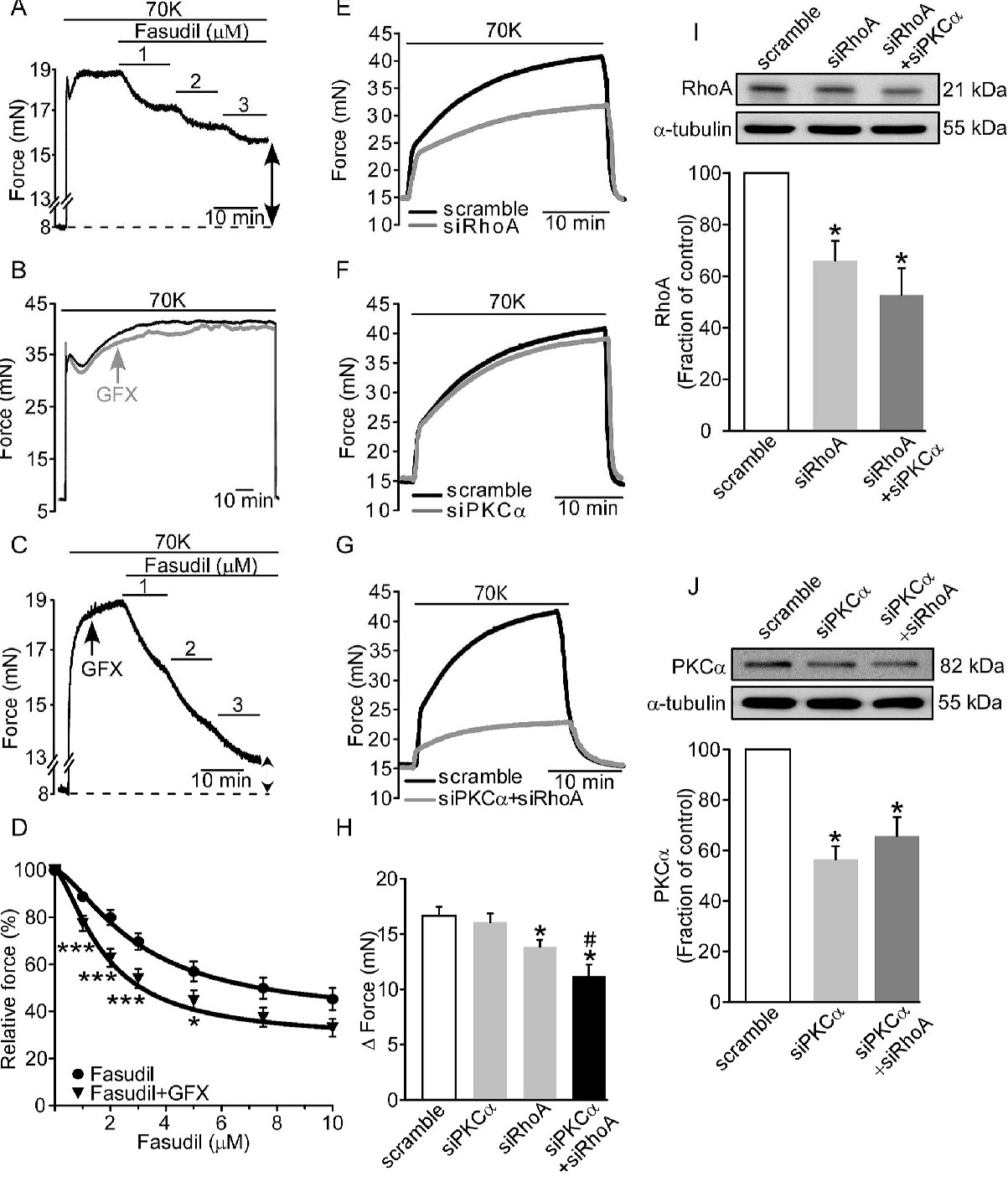Fig. 4. Pharmacological inhibition or siRNA-mediated silencing of RhoA and PKCα induced synergistic vasorelaxant effects on depolarization-elicited sustained arterial contraction. Representative traces illustrating the effects of increasing doses of fasudil (A) or 0.5 ÁM GFX (B) in depolarized (70K) arteries. (C) The vasorelaxant effect of fasudil was synergistically potentiated in the presence of GFX. Arrow indicates application of GFX. (D) Cumulative dose-response curves of fasudil in the absence (●) or presence (▼) of GFX (n = 20). Dose-response curves were fitted to a logistic equation using nonlinear regression analysis tools provided in SigmaPlot software. Statistical significance was calculated by one-way ANOVA followed by Student-Newman-Keuls t-test. *P<0.05, ***P<0.005 vs. control. (E-G) Representative traces to illustrate the effect of siRhoA (E) and siPKCα (F) or double siRNA (G) in depolarized arterial rings. (H) Statistical analysis showing the effects of the indicated siRNAs on isometric force, measured at 10 min (n = 12). Arteries were transfected for 72 h with the corresponding siRNAs. Statistical significance was calculated by one-way ANOVA followed by Student-Newman-Keuls t-test *P<0.05 vs. scramble. #P<0.05 vs. siRhoA. (I-J) Representative western blots (top) and statistical analysis (bottom) showing the effects of siRhoA (I) and siPKCα (J) on protein levels (n = 12). Statistical significance was calculated by one-way ANOVA followed by paired t-test. *P<0.05 vs. scramble.
